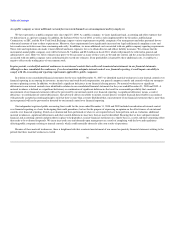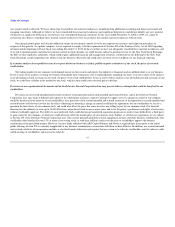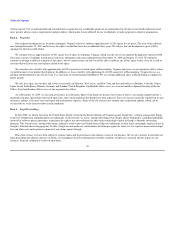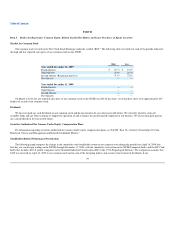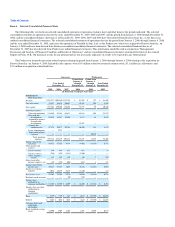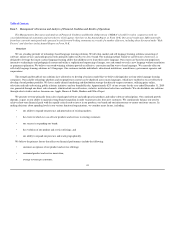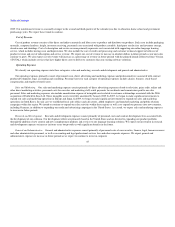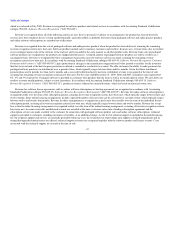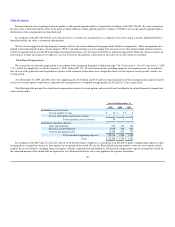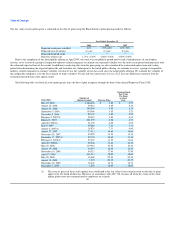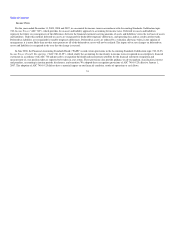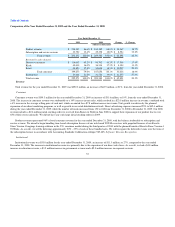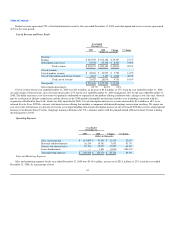Rosetta Stone 2009 Annual Report Download - page 47
Download and view the complete annual report
Please find page 47 of the 2009 Rosetta Stone annual report below. You can navigate through the pages in the report by either clicking on the pages listed below, or by using the keyword search tool below to find specific information within the annual report.
Table of Contents
direct marketing variables, including:
print, television and radio media discounts and rates;
the relevance of our advertising;
online pay-per-click and other online advertising rates;
internal and external call center conversion rates; and
website traffic and conversion rates;
customer brand loyalty;
the number and quality of our kiosk locations;
our presence in international markets; and
cross-channel management of consumer and institutional markets.
We believe that our multi-channel marketing and distribution models are fundamental to our success. Specifically, we focus on educating customers
about the many benefits of our products and services by leveraging our advertising and kiosk network in order to drive website and call center traffic.
Components of Our Statement of Operations
Revenue
We derive revenue from sales of language learning solutions consisting of packaged software and audio practice products and online software
subscriptions. Revenue is presented as product revenue or subscription and service revenue in our consolidated financial statements. Our audio practice
products are normally combined with our packaged software products and sold as a solution.
Product revenue consists of revenue from sales of our packaged software and audio products. Subscription and service revenue consists primarily of
revenue from our online software subscriptions. The content of our packaged software and subscription offerings are the same. We simply offer our customers
the ability to choose which format they prefer without differentiating the learning experience. We intend to begin bundling time-based subscription licenses of
our web-based TOTALe services with perpetual licenses of our Rosetta Stone Version 3 language learning solutions in the U.S. consumer market during the
third quarter of 2010 as part of our Rosetta Stone Version 4 TOTALe launch. As a result, we anticipate that we will be deferring approximately 20%-25% of
each of these bundled sales. The deferred revenue will be recognized over the subscription term in accordance with Accounting Standards Codification
subtopic 985-605, Software: Revenue Recognition.
We sell our solutions directly to individuals, educational institutions, armed forces, government agencies and corporations. We distribute our consumer
products predominantly through our direct sales channels, primarily our websites and call centers, which we refer to as our direct-to-consumer channel. We
also distribute our consumer products through our kiosks, which we own, as well as through select retailers. The majority of our consumer customers purchase
our packaged software and audio practice products. We sell to institutions primarily through our direct institutional sales force. Many institutions elect to
license our products on a subscription basis. For purposes of explaining variances in our revenue, we separately discuss changes in our consumer and
institutional sales channels because the customers and revenue drivers of these channels are different. We anticipate that revenue growth in future periods will
be less significant than we have experienced historically.
Our consumer revenue is affected by seasonal trends associated with the holiday shopping season. As a result, our fourth quarter ended December 31,
2009 accounted for 31% of our annual revenue in
44
•
•
•
•
•
•
•
•
•
•



